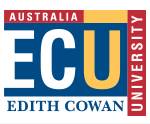Author Identifier
Casper Avenant: https://orcid.org/0000-0001-8217-4669
Glenn A. Hyndes: https://orcid.org/0000-0002-3525-1665
Document Type
Journal Article
Publication Title
Marine Biology
Volume
171
Issue
12
Publisher
Springer
School
Centre for Marine Ecosystems Research / School of Science
RAS ID
77444
Funders
Woodside funding agreement for the Ningaloo Turtle Program (NTP) 2018–2021 / Department of Biodiversity, Conservation & Attractions / Holsworth Wildlife Research Endowment / Ecological Society of Australia / Dell Technologies / Edith Cowan University
Abstract
Predation can significantly threaten the vulnerable egg and hatchling stages of sea turtles, yet for most populations this remains poorly quantified for use in conservation. We provided the first quantified predation rates of flatback turtle eggs and hatchlings at Thevenard Island, a medium-sized rookery on the northwest coast of Australia, with a focus on ghost crabs as potential predators. Burrow densities were used as proxy for ghost crab densities, while start- and end-of-season nest inventories and infrared videography were used to quantify egg and hatchling predation, respectively. Inventories of 27 nests suggested a mean hatching success of 74.2 ± 4.6% with zero predation of eggs, while videography at 17 nests indicated that 30.1 ± 8.1% of emerged hatchlings were predated, mainly by ghost crabs. Females selecting nest locations not easily accessible to ghost crabs, or the composition of flatback’s eggshells may explain the lack of egg predation. A 44.0% egg-to-surf survival rate was estimated, almost double the rate estimated for C. caretta on the Ningaloo coast (24.4%) using similar techniques. Further work is needed to understand if those predation rates are sustainable for recovering threatened species and if mitigation efforts tailored to each species and each life stage are needed.
DOI
10.1007/s00227-024-04548-6
Creative Commons License

This work is licensed under a Creative Commons Attribution 4.0 License.


Comments
Avenant, C., Fossette, S., Whiting, S., & Hyndes, G. A. (2024). Predation rates on flatback turtle Natator depressus eggs and hatchlings at an island rookery. Marine Biology, 171(12). https://doi.org/10.1007/s00227-024-04548-6